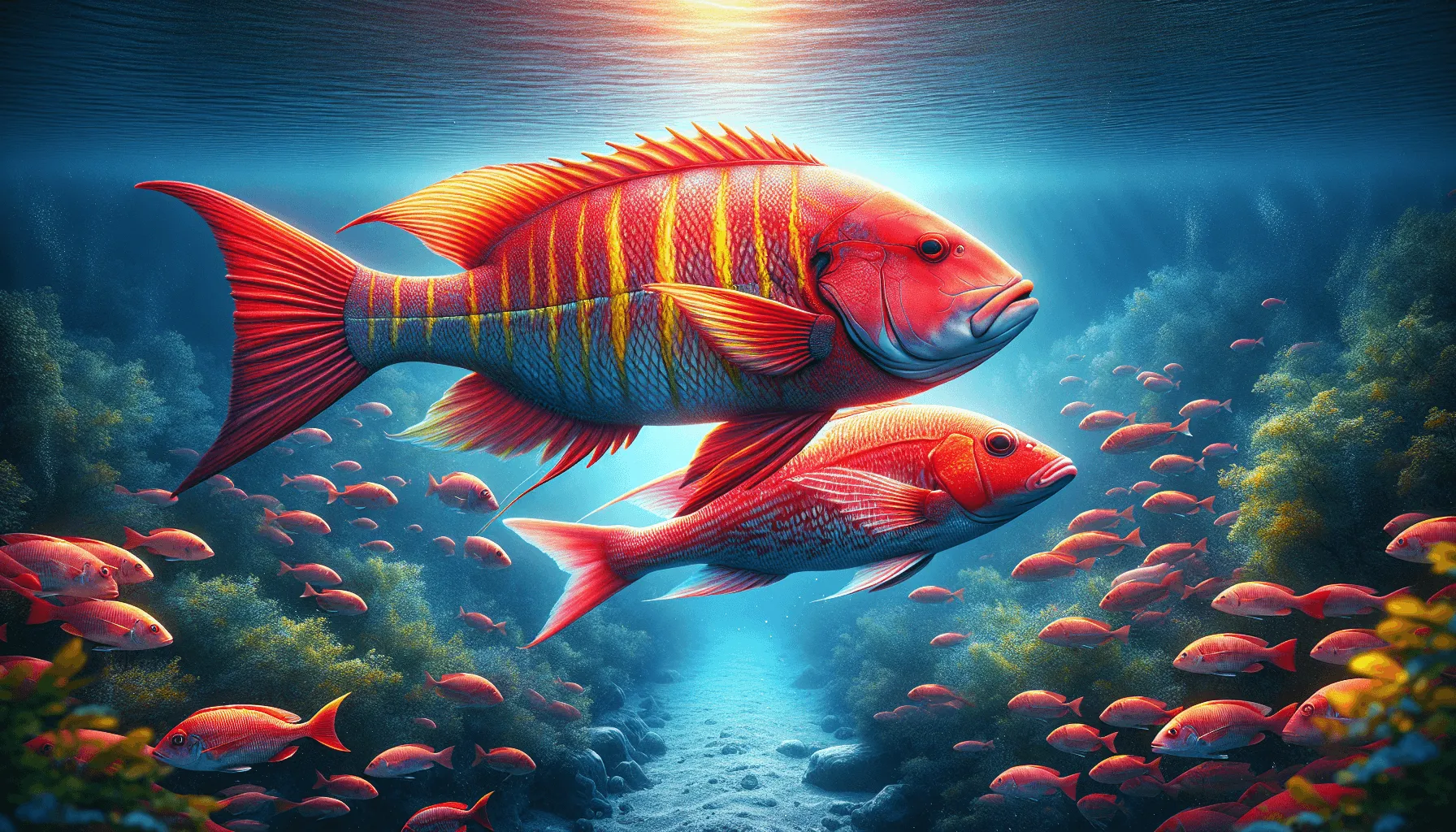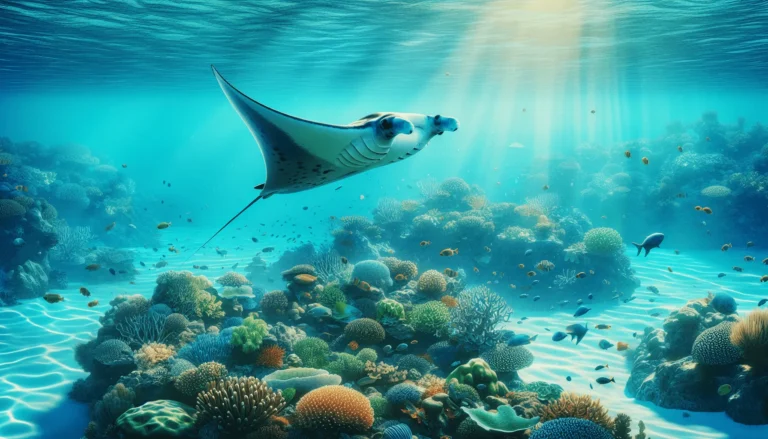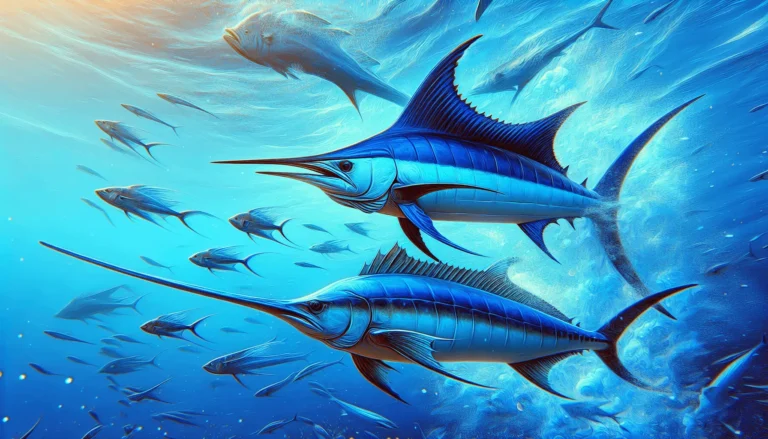B Liner vs Red Snapper: Two of the most popular fish species among anglers. The B Liner, also known as Vermilion Snapper, and the Red Snapper are both prized for their fighting spirit and culinary qualities.
Understanding the differences between these two species is crucial for successful fishing trips and creating memorable culinary experiences. Knowing how to identify each fish can enhance your fishing strategy and ensure you select the right catch for your next meal.
In this article, you’ll learn:
- Key characteristics of B Liner and Red Snapper
- Effective fishing techniques tailored for each species
- Detailed taste profiles to elevate your cooking game
Physical Characteristics
B Liner (Vermilion Snapper) Characteristics
- Coloration: B Liners are recognized by their bright red to orange-red coloration. They have a series of thin yellow lines running along their sides.
- Fin Structure: The fins of a Vermilion Snapper are well-defined, with a forked tail and long pectoral fins. Their dorsal fin is continuous and slightly rounded.
- Body Shape: Typically, B Liners have a slender and elongated body shape. They usually weigh between 1-2 pounds, though some can exceed 5 pounds.
Red Snapper Characteristics
- Coloration: Red Snappers boast a vibrant red hue that covers their entire body. Their coloration tends to be more uniform compared to the Vermilion Snapper.
- Distinctive Features: Notably, Red Snappers have larger mouths with sharp teeth, and their eyes exhibit a pinkish-red tint.
- Body Shape: These fish have a deeper-bodied shape compared to B Liners, often weighing up to 50 pounds or more.
Size Difference and Comparison
The size difference between the two species is significant:
- While B Liners are smaller and more slender, typically ranging from 1-2 pounds
- Red Snappers can reach impressive sizes exceeding 50 pounds.
Vermilion Snappers’ elongated bodies contrast with the deeper-bodied Red Snapper, aiding in visual identification.
Identifying these physical traits can greatly enhance your ability to distinguish between these two popular species during your fishing trips.
Habitat and Distribution
Understanding where B Liners and Red Snappers like to live is key for successful fishing trips.
Preferred Habitats
- B Liners (Vermilion Snapper): Usually found in deeper waters, between 80 to 350 feet. They love reef areas, often seen around rocks and ledges. These fish thrive in habitats like oyster reef areas.
- Red Snappers: Can live in a wider range of depths but generally stay in shallower waters compared to B Liners. They hang out near reefs, shipwrecks, and man-made structures where there’s plenty of food and shelter.
Depth Preferences
- B Liners: Prefer deeper waters, making them a target for deep-sea fishermen. Their love for depths between 80 to 350 feet often takes anglers to offshore reef areas.
- Red Snappers: While they can live in deeper areas, they’re usually found at moderate depths, around 30 to 200 feet. This makes them easier to catch using different fishing methods.
Geographic Distribution
Both species are common in the Gulf of Mexico and along the southern Atlantic coast.
Gulf of Mexico
- B Liners: Often spotted around deep reefs off the coasts of Alabama, Louisiana, and Texas.
- Red Snappers: Found all over the Gulf, from Florida’s panhandle to the Mexican coast.
Southern Atlantic Coast
- B Liners: Commonly seen off the Carolinas down through Georgia’s coastal areas.
- Red Snappers: Live along the entire stretch from North Carolina to Florida, liking both natural and man-made reefs as detailed in this GSMFC publication.
Knowing these habitat preferences and where they’re located can help you plan your next fishing trip targeting either species better.
Lifespan and Growth Patterns
Lifespan of B-Liner and Red Snapper
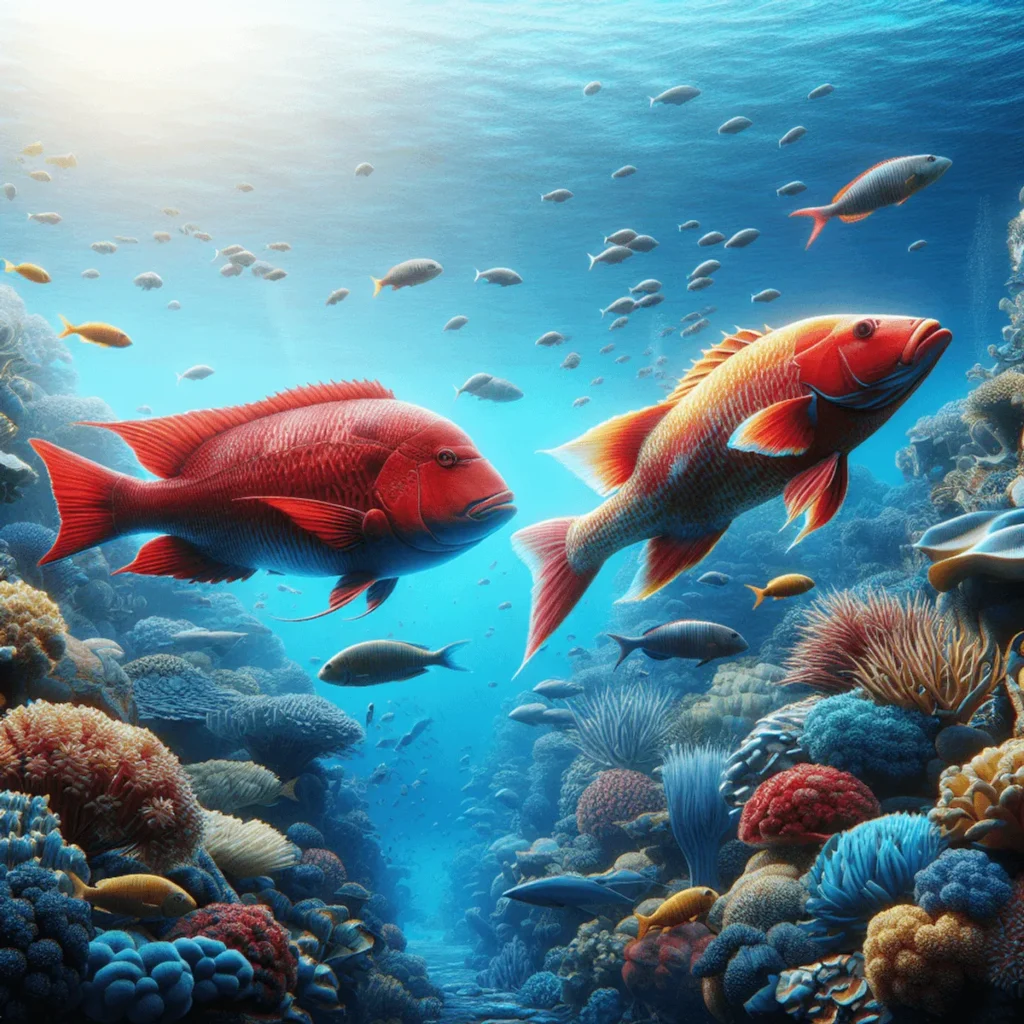
- B Liner (Vermilion Snapper): Typically lives for about 21 years.
- Red Snapper: Can live up to 57 years, making it significantly longer-lived compared to B Liners.
Factors Influencing Lifespan
Several factors contribute to these differences in lifespan:
- Predation Pressure: Red Snappers often face less predation due to their larger size.
- Fishing Pressure: Both species are targeted by commercial and recreational fishers, but regulations may affect survival rates differently.
- Environmental Conditions: Stability and quality of the habitat can also impact longevity.
Growth Patterns
B Liner (Vermilion Snapper)
- Growth Rate: Generally slower compared to Red Snapper.
- Size: Typically reaches 1-2 pounds, occasionally exceeding 5 pounds.
- Environmental Influences:
- Temperature: Warmer waters can enhance growth rates.
- Food Availability: Abundant food sources support healthier, faster-growing populations.
Red Snapper
- Growth Rate: Faster growth in early years, slowing down as they age.
- Size: Can weigh up to 50 pounds or more.
- Environmental Influences:
- Temperature: Optimal growth occurs in stable, moderate temperatures.
- Food Availability: Ample prey leads to robust growth, especially in juvenile stages.
Understanding these aspects helps in better managing fishing practices and preserving both species for future generations.
Fishing Techniques for Each Species
Targeting B Liners
To understand fishing techniques for Snapper, particularly B Liners, it’s essential to consider their behavior and feeding habits. B Liners often inhabit deeper waters around reefs, typically found at depths of 80-350 feet. Here are some effective methods:
- Vertical Jigging: Use a light to medium spinning reel with vertical jigs. Drop the jig to the bottom and then retrieve it with short, sharp jerks.
- Drift Fishing: Employ a reef fishing charter to drift over known reef structures. Use live bait like small fish or squid, as B Liners are attracted to movement.
- Bottom Fishing: Utilize heavy tackle and drop baited hooks directly to the seabed. This method is especially useful in areas with complex reef structures.
Catching Red Snappers
Red Snappers prefer slightly shallower waters compared to B Liners but are also found around reefs and rocky outcrops. Their preferences vary by season and time of day:
- Chumming: Create a chum slick using cut fish or commercial chum products. This technique is particularly effective during early mornings and late afternoons.
- Trolling: Employ trolling tactics with artificial lures mimicking small baitfish. Adjust the depth based on water temperature and time of year.
- Live Bait Fishing: Use larger live baits like pilchards or pinfish. Red Snappers tend to be more aggressive feeders, making live bait highly effective.
Understanding these techniques can significantly enhance your success rates when targeting these prized species.
Culinary Qualities and Taste Comparison
Understanding the distinct flavor profiles of B Liner and Red Snapper can significantly elevate your culinary experience.
B Liner (Vermilion Snapper)
- Flavor Profile: Mild, slightly sweet
- Texture: Firm, lean flesh
- Fat Content: Lower than Red Snapper
Red Snapper
- Flavor Profile: Mild, nutty, a bit sweeter than B Liner
- Texture: Firm, but moister due to higher fat content
- Fat Content: Higher, contributing to a richer taste
Popular Cooking Methods
For both species, simplicity often highlights their natural flavors best.
B Liner
- GrillingTip: Marinate lightly with olive oil, lemon juice, and herbs.
- Pan-SearedTip: Use a hot skillet for crispy skin; finish with a splash of white wine.
- BakingTip: Bake in parchment with vegetables for a moist, flavorful dish.
Red Snapper
- Grilled WholeTip: Stuff with herbs and citrus slices for an aromatic boost.
- BlackenedTip: Coat in Cajun spices; cook quickly on high heat.
- CevicheTip: Freshly caught Red Snapper is perfect when marinated in lime juice.
Enhancing these unique flavors can be as simple as using fresh ingredients and minimal seasoning to allow the fish’s natural qualities to shine through.
Read also: Delicious Smoked Salmon Recipes: Top 10 You Must Try
Identifying Types of Snapper
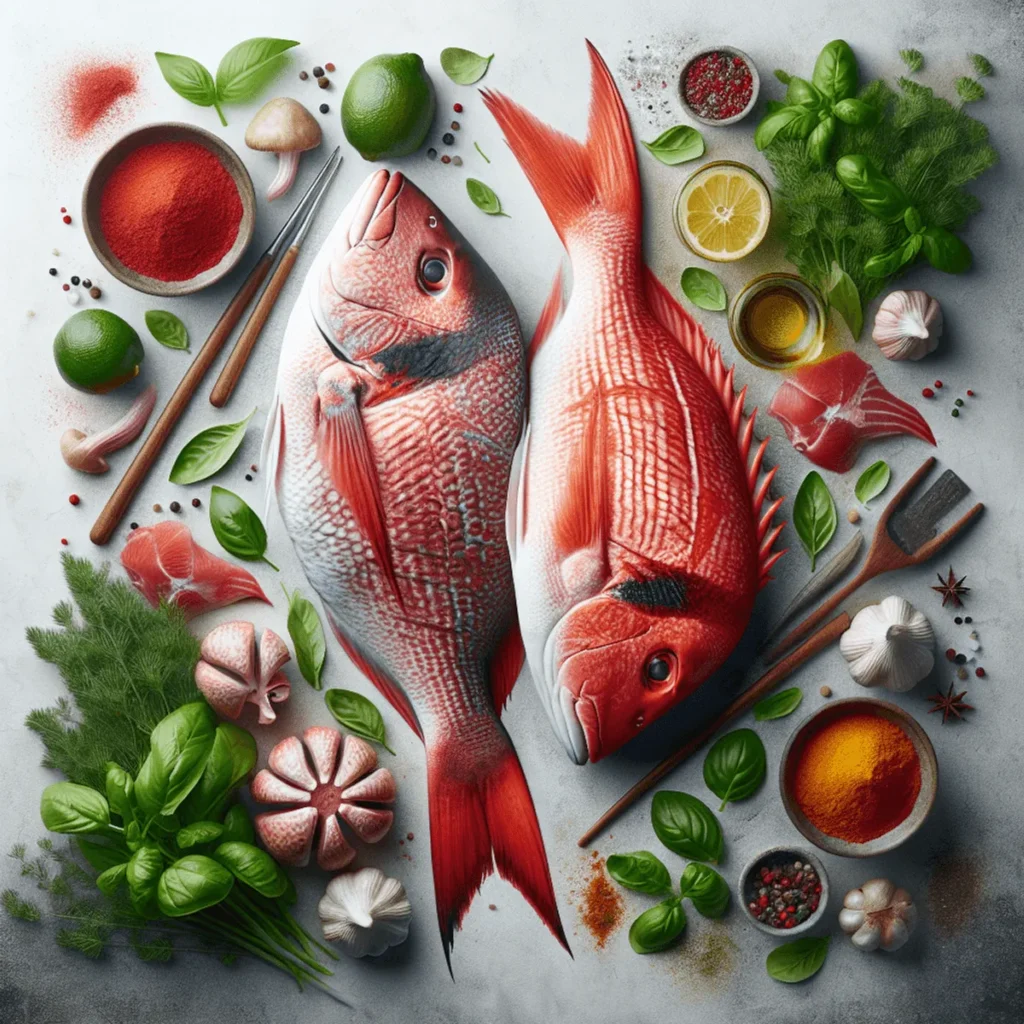
To easily identify types of Snapper, especially distinguishing between a B Liner and a Red Snapper, focus on several key visual cues:
Coloration Patterns
- B Liner (Vermilion Snapper): Exhibits a slender body with a light reddish hue and distinct vertical lines running along its sides. Bloodshot eyes are another characteristic feature.
- Red Snapper: Known for its vibrant red color, the Red Snapper has a more uniform coloration without the vertical lines. It also features pinkish-red eyes and a larger mouth with sharp teeth.
Fin Shapes
- B Liner: Has forked tails which are more prominent compared to other snapper species.
- Red Snapper: Displays a slightly rounded tail fin that differentiates it from the B Liner’s forked tail.
Other common snapper species anglers might encounter include:
- Bastard Snapper: Recognizable by its darker coloration and less streamlined body compared to the Red Snapper. The dorsal fin is typically more pronounced.
- Mingo (Lane Snapper): Features distinctive horizontal yellow stripes along with a more oval body shape. The caudal fin is slightly forked but not as dramatically as the B Liner’s.
Recognizing these visual characteristics will help you accurately identify and differentiate between various types of snapper during your fishing expeditions. It’s also beneficial to understand the structure and function of fish to enhance your identification skills further.
For those interested in exploring more about specific snapper species like the Lutjanus analis, which is another name for the B Liner, or seeking detailed information about various fish species in Hawaii, resources such as this Hawaii Fish Guide can be quite useful.
Popular Fishing Locations
Discover fishing locations for Snapper that promise rewarding experiences in Alabama and Florida. Key spots include:
- Orange Beach, Alabama: Known for its vibrant marine life, Orange Beach offers abundant opportunities to catch both B Liners and Red Snappers. The artificial reefs and deep waters provide ideal conditions.
- Destin, Florida: Often referred to as the “World’s Luckiest Fishing Village,” Destin’s clear, deep waters are prime for targeting these species, especially around the 100-Fathom Curve.
- Pensacola, Florida: This area boasts rich reef systems where anglers can find abundant snapper populations. The Pensacola Bay and offshore structures are hotspots.
Conclusion
Choosing between B Liners and Red Snappers involves considering personal preferences and environmental sustainability. Both species offer unique fishing experiences and culinary delights, so understanding their differences can enhance your fishing adventures. Prioritize sustainable practices to ensure these valuable fish populations thrive for future generations.
FAQs (Frequently Asked Questions)
What are the main differences between B Liners and Red Snappers?
B Liners, also known as Vermilion Snapper, and Red Snapper are both popular species among anglers. Key differences include their physical characteristics, such as coloration and size, as well as their preferred habitats and growth patterns. Understanding these differences can enhance fishing success and culinary experiences.
How can I identify a B Liner versus a Red Snapper?
To distinguish between a B Liner and a Red Snapper, look for key visual cues. B Liners typically have a more subdued coloration with a slimmer body shape, while Red Snappers feature a vibrant red hue and thicker body. Observing fin shapes and patterns can also aid in identification.
What fishing techniques are recommended for catching B Liners?
Effective fishing techniques for targeting B Liners include using specific bait that appeals to their feeding habits and employing methods suited for deeper waters (80-350 feet). Anglers should consider reef fishing charters that focus on these depths to increase their chances of success.
What is the average lifespan of B Liners compared to Red Snappers?
The average lifespan of a B Liner is around 21 years, while Red Snappers can live up to 57 years. These differences in lifespan are influenced by various factors, including environmental conditions and food availability.
What are the culinary qualities of B Liners and Red Snappers?
B Liners have a distinct flavor profile characterized by their texture and fat content, making them versatile for various cooking methods. In contrast, Red Snappers are known for their firm flesh and mild taste. Both species offer unique flavors that can be enhanced through different preparation techniques.
Where are some popular fishing locations for B Liners and Red Snappers?
Top fishing spots for both species include regions in Alabama and Florida, particularly areas known for rich marine biodiversity. The Caribbean is also renowned for its abundance of Red Snappers. Each location offers unique aspects that contribute to fruitful fishing experiences.

